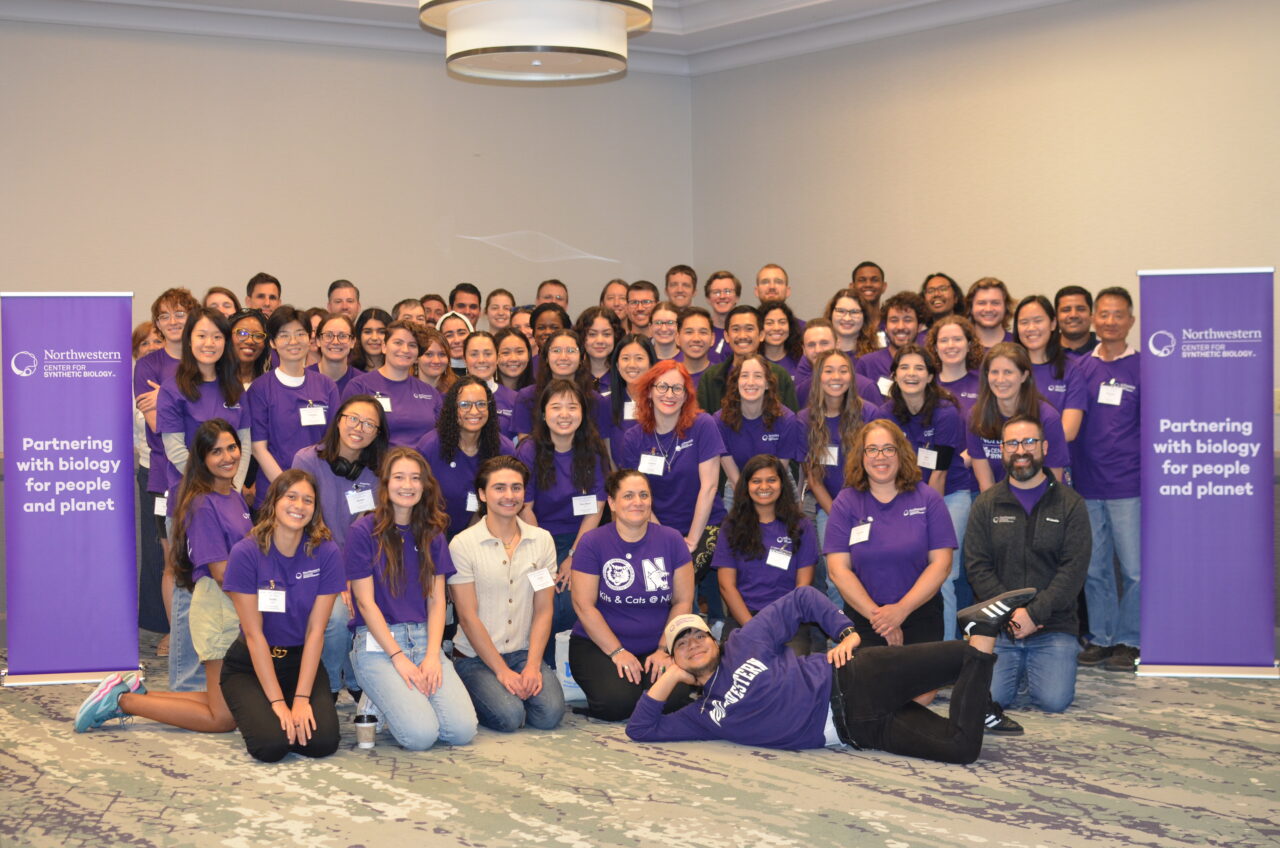This year’s Center for Synthetic Biology’s Annual Retreat centered squarely on Northwestern students, trainees, and postdocs in CSB faculty labs.
“CSB students and trainees are the foundation of our community,” says Arthur Prindle, Assistant Professor of Biochemistry and Molecular Genetics, Chemical and Biological Engineering, and (by courtesy) Biomedical Engineering. “Their energy, creativity, and dedication are critical to moving CSB research forward.”
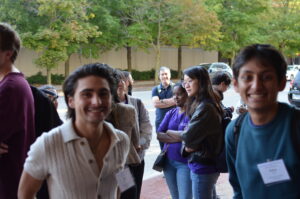
The morning began with poster presentations by graduate students, including those participating in CSB’s predoctoral training program, Synthesizing Biology Across Scales (SynBAS), a National Science Foundation-funded National Research Traineeship program. When a fire drill unexpectedly interrupted the session, students and attendees continued talking as they filed out of the building.
“I wouldn’t be surprised if the fire drill this year was a highlight for some because it provided a natural opportunity to chat,” says Sharisse Grannan, CSB’s internal evaluator. “Who knows? Maybe a new collaboration will come out of that fire drill!”
Grannan explains that for the past two years in surveying attendees, she found that making social connections was one of their main reasons for attending. “Last year, almost three-quarters of survey respondents said they felt more connected to the CSB community as a result of the retreat,” she said.
Man vs. Machine
“Not so long ago, I was in the same shoes as all of you,” said keynote speaker Cesar de la Fuente. The Presidential Associate Professor at the University of Pennsylvania pioneered the use of AI for antibiotic discovery and molecular de-extinction.
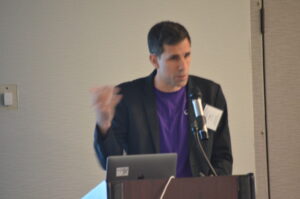
“I remember when the Center came to life back in the day,” says de la Fuente. “I was following it, and I was always very impressed as to how Northwestern was really a visionary to create a hub for synthetic biology before anybody else.” Even though the science is evolving rapidly, de la Fuente assured attendees that it will still require “a tight collaboration between machines and humans.”
What used to take several years, now takes less than a day to come up with hundreds of thousands of interesting preclinical candidates, says de la Fuente.
“It’s really an amazing playground right now for science-enabled bio advances in computing power, AI, machine learning and also our ability to synthesize all of these peptides in a pretty high throughput fashion and then do the experimental validation,” says de la Fuente.
Contemplating Careers
In the afternoon, faculty and guest speakers participated in career panels. The academic career panel included de la Fuente and Northwestern’s Lisa Volpatti, Assistant Professor of Biomedical Engineering, Ludmilla Aristilde, Associate Professor of Civil and Environmental Engineering, and Krishna Shrinivas, Assistant Professor of Chemical and Biological Engineering.
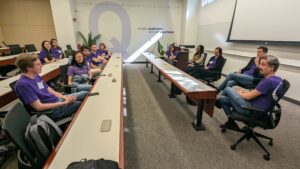
“I kind of always had an inkling I wanted to be a scientist,” says Shrinivas. “I had this rather naive worldview that the only way to be a scientist was to be a professor. As I went through my PhD, I had exposure to a lot of different things. At MIT, I had an opportunity to do an internship in a pharmaceutical company. I also had friends who took the biotechnology route. I realized there’s plenty of ways to be a successful scientist, but what I really had meant when I thought I wanted to be a scientist was I wanted to be someone who teaches science.”
The industry panel comprised of Heather Calcaterra, Senior Scientist at AbbVie, Khalid Alam, Founder and CEO of Stemloop, and Mike Fiske, Invention Manager from Northwestern INVO, emphasized the importance of establishing networks.
“Networking is a big part of the success that I’ve had so far,” says Alam. “I think that fundamentally you just have to put yourself out there. Don’t be afraid to send that LinkedIn connection request. Don’t be afraid to send an email, a direct message. Don’t be afraid to just walk up to someone, whenever you see them and strike up the conversation.”
Building Community
The program wrapped up with talks given by Shrinivas in which he describes his lab’s work on computational machine learning-aided methods for engineering fuzzy biomolecular ensembles, and Dylan Brown, a fifth-year chemical engineering PhD student in the Lucks Lab. Brown started the Center for Synthetic Biology Training Association (CTA) this summer to foster deeper connections between faculty and students.
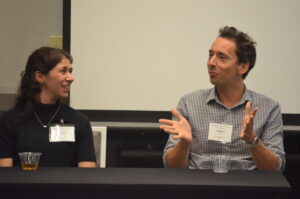
“We started the CTA as a means to bridge the gap between faculty, administration and students to continually develop the community environment,” says Brown. “By bringing students in, we thought our voices would be heard in planning different types of events, improving the community environment, and facilitating communication between the many different people in the center.”
As the lead planner for the retreat, CTA member Madeline (Maddie) Joseph, a third year PhD student in Chemical Engineering, embodies this philosophy.
“I love the community here,” says Joseph. “I think it’s amazing how people are engaged in what other people do. Everyone’s really passionate about what they do, but they’re also passionate about what their colleagues do. People take care of each other here. It’s an honor to be a part of it.”
by Lisa La Vallee
